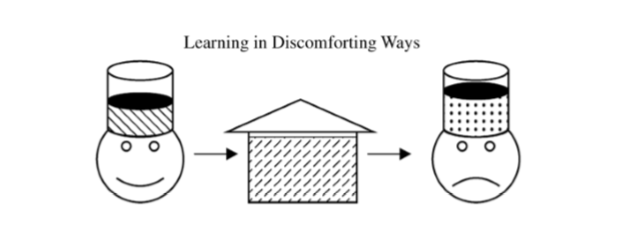Suffering, Crisis, Moving through it
By Damon Motz-StoreyMarch 18, 2015 - 17:03

"According to Buddhism, life in this world involves suffering. And people suffer beacause they attribute meaning and substance and value to knowledge, signs, and represenations of reality rather than reality itself. Relating to the world through our knowledge can lead to suffering...Despite its problematic nature, we often cling to knowledge, perhaps because we have learned to find comfort in its everydayness or common sense, or perhaps because we see that the accumulation and reproduction of official knowledge matter in schools and society...the goal is to treat knowledge paradoxically: use it in ways that help us improve our lives, but constantly interrupt the suffering that results from how we learn and what we think." (Kumashiro, 47-48)





